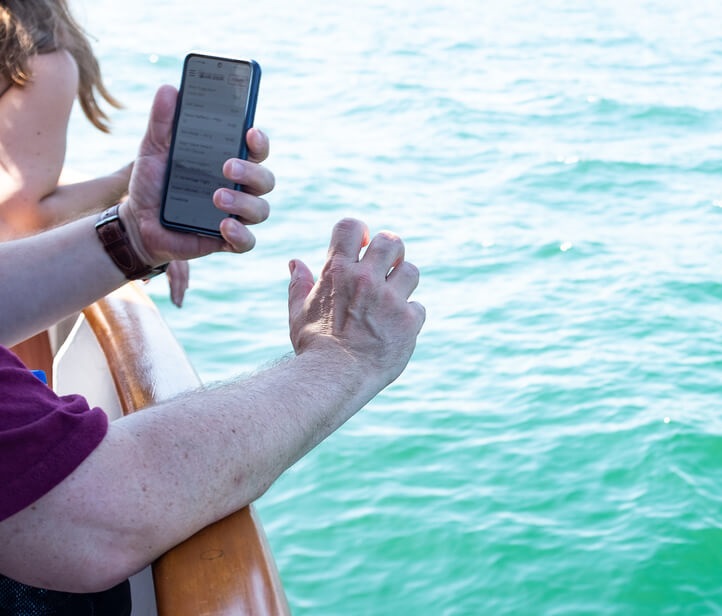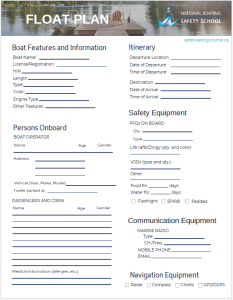
What Should Be Included on a Float Plan?
Also called a trip plan or sail plan, float plans are an important element of boating safety. You should share your float plan with someone you trust before you go out on the water, every single time.
Keep reading to find out what information to include on a float plan, or download our float plan template: National-Boating-Safety-School-Canada-Float-Plan-Template
Float plan contents
A float plan should include the following information:
- Trip information: Indicate clearly when you plan to depart (date and times), where you are headed (date and times) and your intended route and stopping points.
- Boat owner Name, physical description, and contact information.
- Boat operator: Name, physical description, and contact information.
- Vessel details: Size, type, color, registration number, length, make, engine type
- Safety equipment: Include types of PFDs, communication devices and Distress Signals on board.
- Phone number for local authorities for all areas of your intended route.
Complete a float plan before you launch your boat and share it with someone you can trust, who can notify authorities if you don’t arrive at your destination or return as planned.
How to file a float plan
Here’s what you need to do to file a float plan:
- Create a float plan before you leave. Don’t leave out any details! Remember, a float plan could save your life if you run into trouble, like a storm or other emergency.
- Share your float plan with a responsible person whom you trust. Float plans can be communicated via emails, texts, phone calls, or using a form like the one included in this article.
What to do with your float plan when you return
Once you’re back on land, inform the person holding your float plan that you’ve returned safely. Doing so promptly will help avoid unnecessary Search and Rescue operations, in the event that your float plan partner is concerned about your whereabouts. Unnecessary rescue operations take time and effort away from real emergencies, and are expensive.
If your boating plans change
If plans change, you should immediately communicate the new details to the person who has your float plan. You may also wish to notify any authorities whose services may be required as a result of the change, such as the police or emergency services, or marina authorities.
Depending on the nature of the change, it may also be necessary to update or obtain new permits or approvals. This could apply if you will be following a different route or docking at a different harbour than planned.
Always carry communication devices on board
Make sure you have communication tools onboard, such as a radio or cell phone. Before you head out, get familiar with the correct protocol for issuing marine distress signals. If you need to make a change to your float plan, you can easily do so with the right communication equipment.
Get your official Canadian boating license today!
Always tell someone you trust about your boating plans and provide details on where you’re going and when you plan to return. This way, if you don’t show up when and where you planned, someone can notify the authorities and get you the help you need.
Learn about safe boating laws in Canada and take the Canadian boating safety course with the National Boating Safety School!


